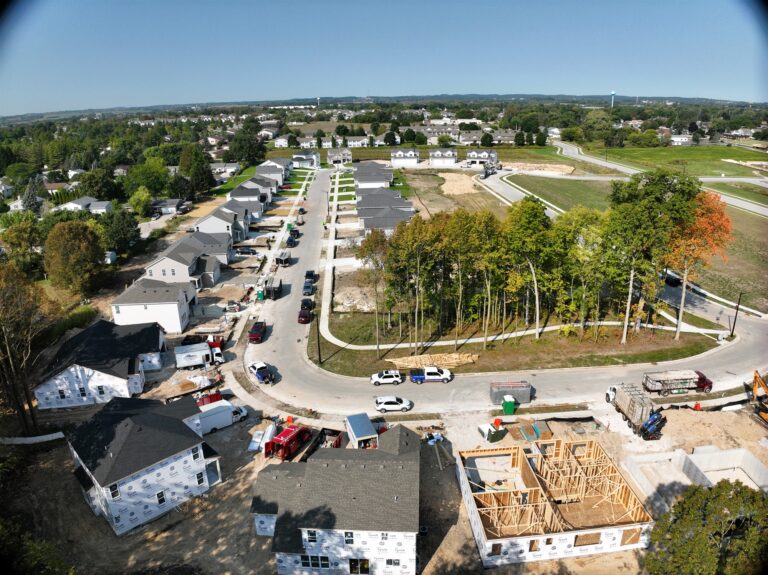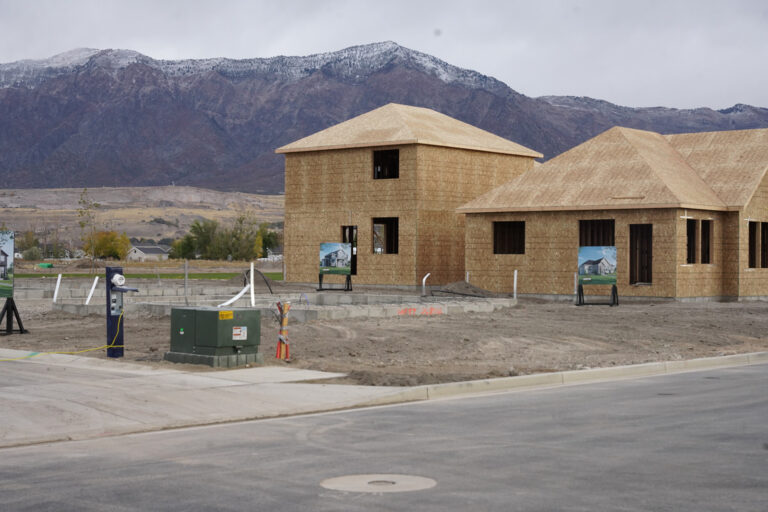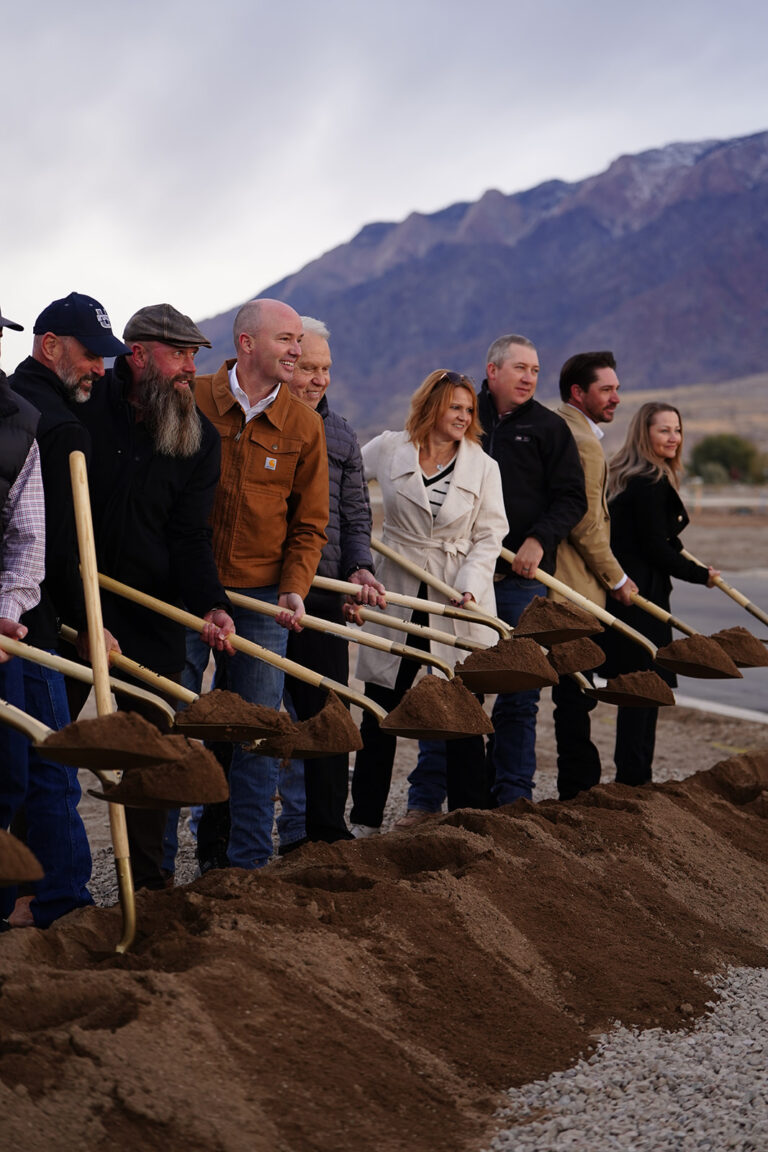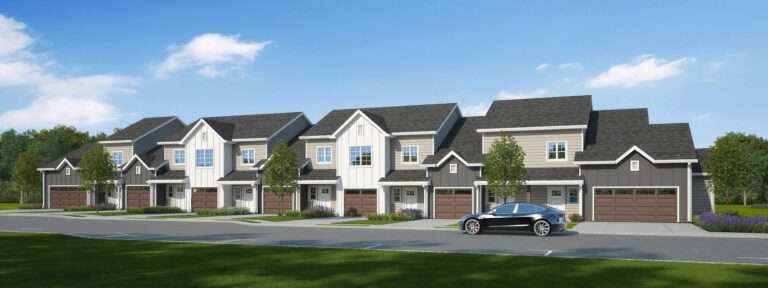Investing in Homeownership: Public Investments in Starter Home Development
AUTHOR: Benjamin Preis, Ph.D.
Key Points
- Homeownership is getting farther out of reach for many Americans, especially first-time homebuyers, in large part because new houses are built for the high-end of the market.
- The State of Utah and Washington County, WI have both successfully created programs to encourage developers to build housing for owner-occupancy at price points that are attainable to more people.
- Utah’s program has recently expanded to encourage the creation of condominiums, another important segment of the homeownership market.
Today, the median new home sold in the U.S. is 37 percent more expensive per square foot than the median new home sold in 2000, even when adjusted for inflation, according to U.S. Census Bureau data. That same median home is also 10 percent larger. Additionally, new-start condominium and co-op development virtually disappeared following the Great Recession. Taken together, that means that the prototypical “starter home” is harder to find. While there is no strict definition of a starter home, these homes are generally smaller (typically under 2,000 square feet), and attainable to first-time homebuyers with average incomes and credit scores. This lack of new starter homes has coincided with increased prices for the existing housing stock and stricter mortgage lending criteria, meaning that many first-time homebuyers are unable to find and finance a home to purchase, even if they have saved for a downpayment. Indeed, the median existing single-family home sold in the U.S. for $400,000 in 2024, compared to $247,000 in 2000 (even when adjusting for inflation) according to the Joint Center for Housing Studies at Harvard University, with the median home value now nearly six times the median income, and the income required for a starter home now approximately $77,000.
Moderately priced, entry-level homes are an important piece of the housing ecosystem. Small single-family homes, townhouses, and condominiums allow households to build up equity and leverage long-term savings to build household wealth. With fewer starter homes available, the median age of first-time homebuyers has continued to inch upward, reaching 38 years old in 2024, up from 32 in 2000.
In order to increase the supply of starter homes available for purchase by first-time homebuyers, a number of communities have created new sources of funding to incentivize the development and sale of new homes under a certain price point. These new programs mirror the housing production fund created by Montgomery County for the creation of affordable rental housing units but are instead focused on affordable homeownership. In Utah, the state repurposed $300 million originally slated for transportation investments to make available below-market rate loans to developers who build and sell homes for less than $450,000. In Washington County, WI, a suburban county near Milwaukee, the county used over $8 million made possible through America Rescue Plan Act (“ARPA”) funding to create the Next Generation Housing Initiative (NGH). NGH requires the development of homes for owner-occupancy priced between $340,000 and $420,000. These programs demonstrate how creative financing can be used to encourage the private market to build new homes for sale for individuals that otherwise might be priced out.
The Challenge This Tool Solves
In the 21st century, newly built homes have gotten larger and more expensive and the availability of for-sale product type has been reduced by multiple variables. This increase in cost and limited supply leaves first-time homebuyers with few options for affordable, newly built homes. In part, the lack of newly built starter homes stems from the increased cost of construction, increased labor costs, and a smaller pool of new qualifying homebuyers; developers have responded by moving towards larger, more expensive, custom homes, or “build to rent” communities. By creating financial products that encourage the creation of new condominiums or single-family starter homes, public investments in starter home development result in the creation of new homes for purchase by individuals who may otherwise not be able to find new housing that they can afford to buy.
Types of Communities That Could Use This Tool
While scattered-site single family development can be used in conjunction with these financing tools, communities that have large tracts of developable lands for new single-family, townhouse, and missing middle developments of duplexes, triplexes, and small condo-developments under 10 units are best positioned to see returns from economies of scale. This tool can also be paired with other public incentives, such as discounted public land, in order to further drive down the cost of development and increase the amount of affordable housing created within a development. However, some communities — especially communities with depressed housing markets where new homes often appraise for far less than the cost of construction — may struggle to recoup their investments in starter home development, as the subsidy required to make the home affordable may be significant.
Expected Impacts of This Tool
In Washington County, WI, the stated objective of the Next Generation Housing Initiative is to generate 1,000 new owner-occupied housing units by 2032, from a total investment of $8.25 million. The $300 million in the Utah Homes Investment Program cost the state approximately $18 million to subsidize the interest rates offered by the program, and if used to its full potential, could result in 3,000 new homes in the state, a subsidy of only $6,000 per home.
Following the Great Recession, home building ground to a halt. In the five years prior to the Great Recession, an average of 1.5 million new single-family homes were built ever year. Between 2010 and 2014, that number was only 522,000. Starter homes were particularly hard hit: prior to the Great Recession, new homes under 1,800 square feet represented approximately 30% of the single-family housing market; today, that number is only 20%, meaning that, every year, there are at least 200,000 new single-family starter homes missing from the pipeline. New condominium development tells a similar story, with very few new condominium developments having been constructed since 2007.
There are many reasons for this decrease in attainable starter-home development, including a shrunken homebuilding industry that never fully recovered from the Great Recession, workforce shortages, increased regulatory burdens including large-lot zoning and minimum dwelling unit requirements, more stringent condo-defect laws, and more. Federal regulations related to mortgage lending has also limited the number of eligible borrowers who would be interested in
starter homes.
In place of new starter homes, two trends have emerged. First, larger, custom, high-end singlefamily homes, which are more profitable for builders, have crowded out new starter home development. Second, build-to-rent communities where subdivisions that previously may have been developed for owner-occupancy are instead being developed for renters. While there were fewer than 10,000 built-to-rent units under construction in any given quarter prior to 2015, new built-to-rent development has increased to more than 80,000 under construction in 2024.
In recent years, the sharp rise in interest rates has caused additional challenges with the starter home market. The inventory of existing homes for sale has dropped sharply, as existing homeowners have become reticent to move, and give up interest rates that may be three or four percentage points lower than what they could access in today’s interest rate environment. With fewer existing homes for sale, new homebuyers can’t access this part of the inventory either,
leaving them further frozen out of the market.
In order to help first-time homebuyers access a challenging housing market, many communities have turned to downpayment assistance, closing cost assistance, and second mortgages. These are often structured as grants or forgivable loans and may be targeted to households making less than the median income in a region. These subsidies are an important piece of the puzzle, especially for households that are unable to save for a downpayment and closing costs but ultimately don’t address the underlying supply constraints.
While states and cities have historically focused their public investment to spur affordable apartment developments, some communities are now trying to spur the development of new starter homes for sale, including single-family homes, duplexes and triplexes, and condominium buildings. This tool describes two such efforts.


Public Investments in Starter Home Development
In order to address the severe shortage in starter-home development, and the lackluster rebound of new for-sale housing development following the Great Recession, some communities have turned to direct public investment to spur the development of new starter homes. These public investments can take different forms but generally act as an incentive or a subsidy to a homebuilder and developer to build new homes, for sale, at a price affordable to households making the median income in a region or less.
Investments in starter home development often look different than investments in affordable apartments for-rent. That’s because while apartments require rents that cover the ongoing cost of operations and maintenance — and ongoing subsidy if those rents are less than that ongoing operations and maintenance — homes built for-sale only require an up-front subsidy to cover the difference between the cost of land, labor, and materials and the cost that a new homebuyer can afford for that house. In the case of public investments to spur starter home development, this gap between the cost of construction and the affordable sales price could be even smaller, as the public incentives encourage smaller homes that simply cost less due to their construction and square footage.
Public investments in starter home construction can address many of the constraints associated with new housing developments, including:
- The high cost of land, by providing publicly-owned land for development at a discounted cost;
- The high cost of construction loans in the current interest rate environment, by providing below-market rate construction loans, repayable at closing;
- The high cost of predevelopment, by providing grants or repayable loans for land acquisition, engineering studies, infrastructure construction;
- The cost of public permits, including fees for plan reviews, building inspections, occupancy, HVAC, electrical, plumbing, water, sewer and other impact fees, by providing grants or repayable loans to cover the cost of such fees;
- The onerous restrictions on where and whether smaller homes on small lots are able to be built, by reforming land use restrictions; and
- The high cost of delays and the time-cost of money, by streamlining and reforming permitting processes and inspections to increase the speed at which permits are issued.
The two case studies described below use some combination of all of these different forms of financial assistance. Specifically, the Utah Homes Investment Program provide below-market rates loans, sometimes paired with state-owned land. While the Next Generation Housing Initiative in Washington County, WI provides funding opportunities for both predevelopment costs, infrastructure construction, and for the cost of core construction permit fees.
In order to provide the financial opportunities, these programs relied on a variety of funding sources. In Utah, the state appropriated $18 million to cover the lost interest earnings for the Utah Homes Investment Program when the funding was reallocated from the Utah Department of Transportation Infrastructure General Fund.
In Washington County, WI, the county used federal made possible by the American Recovery Plan Act (ARPA) to provide an incentive for development costs of up to $20,000 and a permit fee incentive up to $6,000 per owner-occupied dwelling unit. The $20,000 investment acts as a 0% loan to the builder or developer. When a development is located within a Tax Increment Financing (TIF) district, a portion of the increment can be used to repay the incentive. Other communities could turn to ballot measures, tax abatements, housing accelerator funds, philanthropy, or housing trust funds as sources of capital for homeownership subsidies.

Case Study
Utah Homes Investment Program
Investing in Homeownership: Public Investments in Starter Home Development
Under Governor Spencer Cox, the State of Utah has set an ambitious goal: build an 35,000 additional new starter homes by 2028 beyond what the market had been providing historically.
Read More About Utah Homes Investment Program
Case Study
Washington County, WI Next Generation Homes Program
Investing in Homeownership: Public Investments in Starter Home Development
Washington County is a suburban county located to the northwest of Milwaukee County. With a population of less than 140,000, the county had seen continuous and substantial growth since the 1950s, growing more than 10% each decade until the 2010s.
Read More About Washington County, WI Next Generation Homes ProgramDiffusion and Scaling Public Investments in Starter Home Development
Communities need to understand their local for-sale housing development ecosystem to diffuse and scale public investments in starter home development. They should target the barriers that mostly directly prevent the production of homes that are available for-sale to communities’ median-income households.
Once programs have been developed targeting those barriers — interest rates, permit fees, land costs, or other impediments — communities must identify the best mechanism to distribute that funding to developers. The case studies highlight different approaches to capital disbursement. In the case of Utah, the state is partnering with existing qualified financial institutions to deploy loans to developers and homebuilders. These qualified financial institutions already have the in-house expertise and experiencing in underwriting, monitoring, and disbursement to private entities. In Washington County, WI’s Next Generation Housing Initiative, the county itself enters into a development agreement with developers to provide funding for new housing developments. Programs in other places, like the Pennsylvania Housing Finance Agency’s mortgage programs, can help with the purchase and rehab of existing homes, while Philadelphia’s Turn The Key program encourages developers to create affordable single-family homes scattered throughout Philadelphia on city-owned land. Other sources of financing, especially for more resilient homes, may be available to complement or augment these new dedicated sources of funding for starter home development.
Other potential models exist as well. While not explicitly focused on homeownership opportunities, models like a Housing Accelerator Fund, or a Public Asset Corporation could be used to develop new starter homes with public or philanthropic investments.
One long-term challenge that communities need to address when considering public investments in starter home development is the long-term monitoring and enforcement of any deed restrictions. Both Utah and Washington County place deed restrictions on the homes developed with public funds. Utah requires owner-occupancy for the first five years, while Washington County requires owner occupancy in perpetuity through a Deceleration of Protective Covenant. Furthermore, a deed restriction on NGH homes sold under fair market value may recapture a portion of the difference between the initial sale price and the fair market value if the home is resold within the first five years after initial occupancy. These sort of deed restrictions require enforcement — while title companies and recorders of deeds will likely flag these sort of deed restrictions related to resale, a Declaration of Protective Covenants specifying owner occupancy is harder to enforce. Communities may wish to partner with existing nonprofit organizations, like Community Land Trusts, to act as stewards of these new homeownership-focused developments. Community Land Trusts — which own the land and lease it to homeowners for a nominal fee — often have the mechanisms and in-house expertise to monitor the condition and occupancy of the housing over the long term.
Finally, communities may consider public investments to increase the supply of entry-level homeownership opportunity with demand-side subsidies like downpayment assistance, such as Utah’s requirement that developers provide prospective homebuyers with information regarding Utah’s Homebuyer Assistance Program. Washington County, too, provides downpayment incentives through the Heart & Homestead Earned Down Payment Incentive. The Incentive offers qualifying individuals up to $20,000 in down payment incentive toward the purchase of an owner-occupied home purchased for under $420,000 anywhere in the County. Recipients of the program have 5 years after closing on their home to “earn” their incentive through volunteering with and donating to local nonprofit organizations participating in the program. Recipients, and anyone living in their household, can receive $25 in Incentive Earnings for every 1 hour volunteered and 70 cents in Incentive Earnings for every $1 donated. Given that homeownership occasionally comes with large, unexpected repair costs, communities could also consider implementing programs like the Rhode Island HomeSecure program, which provides a grant equal to three months of mortgage payments in the event of an emergency for the first three years after a homebuyer uses a mortgage from the Rhode Island Housing Finance Agency.
